A scale is a collection of pitches a.k.a. notes, used for creating melodies, either pre composed or improvised on the spot. A scale is also used for the harmony – the chords. The melodies and chords create a tonality. The most common source for these melodies and chords is the Major scale. Also known as the Ionian scale or mode.

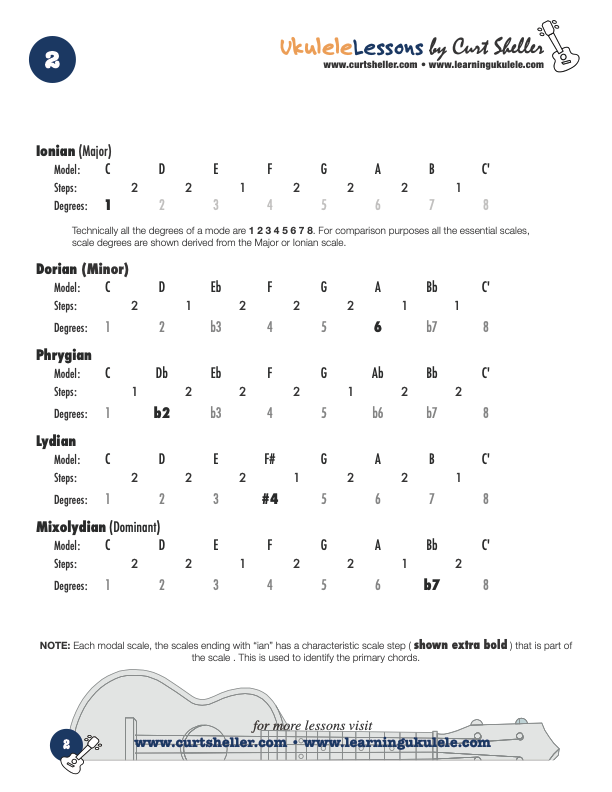


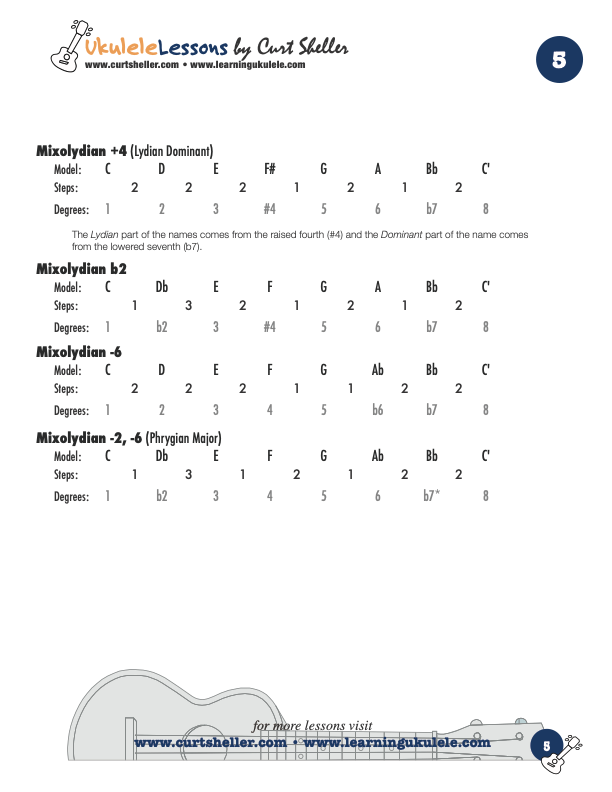
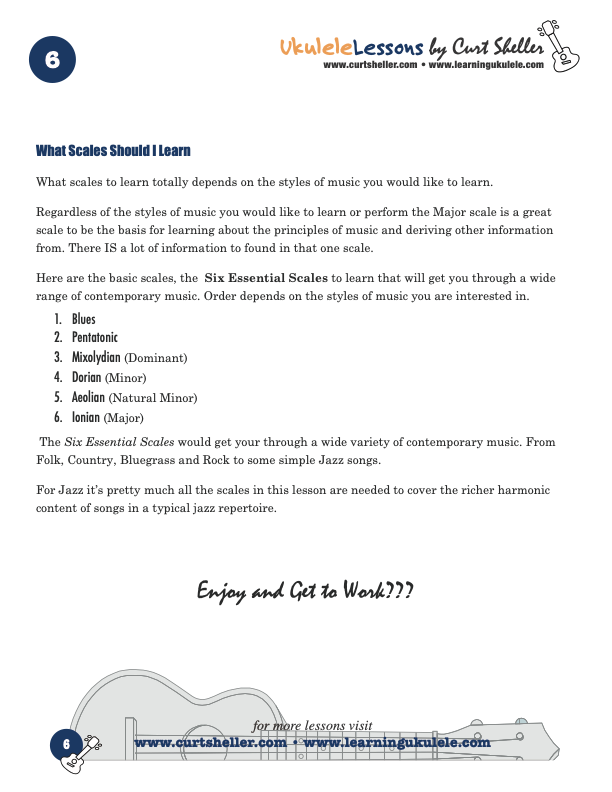






Each note of a scale is called a scale degree or scale tone and uses one of the seven letters of the musical alphabet: A B C D E F G and can also have the addition of a sharp (#) or flat (b). The distance between each scale degree can be expresses in steps. The distance from the root or 1st note of the scale to one of the other notes of the scale is called an intervals and has a name and distance. For the purposes of this lesson that can be expressed as a number, degree representing it’s position in the scale relative to the root or 1.
Scale can be organized as: Traditional, Modal, Contemporary, Altered and Exotic.
Available for Premium Site Access Plans Only
Sorry, can't give it ALL away!
This content requires a Premium / Gold Access Plan or enrolled in the Study with Curt - On-line or Private Lesson Program.
To view additional content for this page you'll need to either Sign In or Register or Upgrade to a Premium Site Access Plan .
Ukulele Eamples - C Tuning
A few of the scales on Ukulele using C Major in C Tuning, Open Position.
C Ionian (Major) C D E F G A B C`

Use the audio to compare the sounds of the individual scales.
C Dorian (Minor) C D Eb F G A Bb C`

Use the audio to compare the sounds of the individual scales.
C Phrygian C Db Eb F Gb Ab Bb C`

Use the audio to compare the sounds of the individual scales.
C Lydian C D E F# G A B C`

Use the audio to compare the sounds of the individual scales.
C Mixolydian C D E F G A Bb C`

Use the audio to compare the sounds of the individual scales.
C Aeolian (Natural Minor) C D Eb F G Ab Bb C`

Use the audio to compare the sounds of the individual scales.
C Locrian C Db Eb F Gb Ab Bb C`

Use the audio to compare the sounds of the individual scales.
A mode is when the characteristic scale tone is stressed.
A scale is when all tones are equal.
Once you master the open position for any given scale the hard work is navigating the many possibilies along the fingerboard. Here is a lesson on Navigating the Major Scale using the Six Secrets of Ukulele Fingering of that can be applied to any scale or mode.
Each note of a scale is called a scale degree or scale tone and uses one of the seven letters of the musical alphabet: A B C D E F G and can also have the addition of a sharp (#) or flat (b). The distance between each scale degree can be expresses in steps. The distance from the root or 1st note of the scale to one of the other notes of the scale is called an intervals and has a name and distance. For the purposes of this lesson that can be expressed as a number, degree representing it’s position in the scale relative to the root or 1.
Scale can be organized as: Traditional, Modal, Contemporary, Altered and Exotic.
Available for Premium Site Access Plans Only
Sorry, can't give it ALL away!
This content requires a Premium / Gold Access Plan or enrolled in the Study with Curt - On-line or Private Lesson Program.
To view additional content for this page you'll need to either Sign In or Register or Upgrade to a Premium Site Access Plan .
Ukulele Eamples - C Tuning
A few of the scales on Ukulele using C Major in C Tuning, Open Position.
C Ionian (Major) C D E F G A B C`

Use the audio to compare the sounds of the individual scales.
C Dorian (Minor) C D Eb F G A Bb C`

Use the audio to compare the sounds of the individual scales.
C Phrygian C Db Eb F Gb Ab Bb C`

Use the audio to compare the sounds of the individual scales.
C Lydian C D E F# G A B C`

Use the audio to compare the sounds of the individual scales.
C Mixolydian C D E F G A Bb C`

Use the audio to compare the sounds of the individual scales.
C Aeolian (Natural Minor) C D Eb F G Ab Bb C`

Use the audio to compare the sounds of the individual scales.
C Locrian C Db Eb F Gb Ab Bb C`

Use the audio to compare the sounds of the individual scales.
A mode is when the characteristic scale tone is stressed.
A scale is when all tones are equal.
Once you master the open position for any given scale the hard work is navigating the many possibilies along the fingerboard. Here is a lesson on Navigating the Major Scale using the Six Secrets of Ukulele Fingering of that can be applied to any scale or mode.
Related Lessons, Videos, Lesson Series, Songs, Books & Reference Charts, Resources & Assets, Workshops are below.
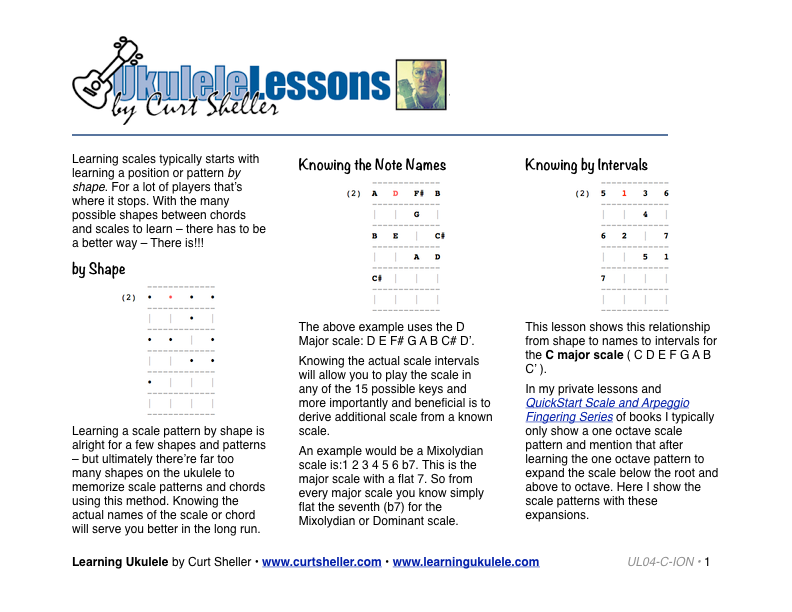
Essential C Major scale patterns for ukulele. Learning scales typically starts with learning a position or pattern by shape. For a lot of players that‘s where it stops. With the many possible shapes between chords and scales to learn - there has to be a better way - There is!!!

A scale is a collection of pitches a.k.a. notes, used for creating melodies, either pre composed or improvised on the spot. A scale is also used for the harmony – the chords. The melodies and chords create a tonality. The most common source for these melodies and chords is the Major scale. Also known as the Ionian scale or mode.
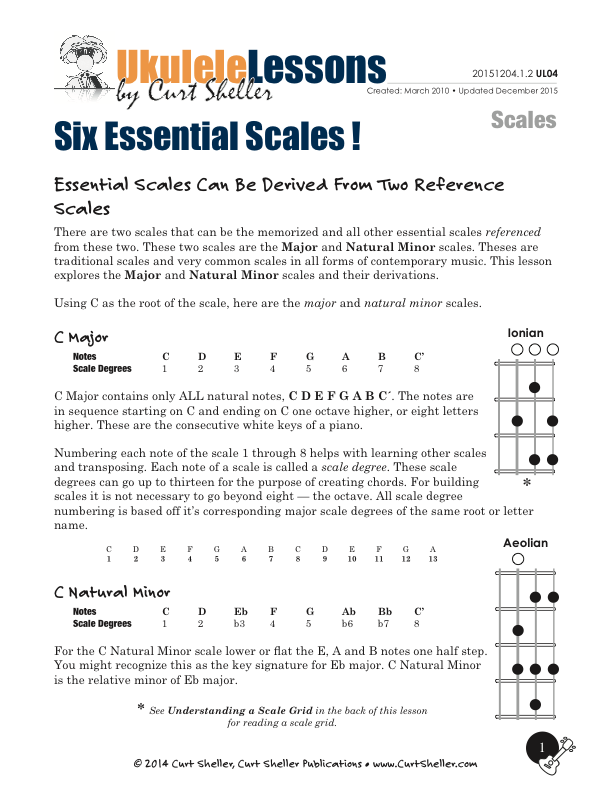
The six essential scales are: Blues Major Pentatonic Mixolydian Dorian Aeolian and Ionian From the six essential scales, you can get through a wide variety of traditional and contemporary music. A scale is simply a collection of pitches or notes, not really a "this is a Jazz scale", "this is a Blues" or "this is a Rock scale". It's how a scale is used that really matters not its name.
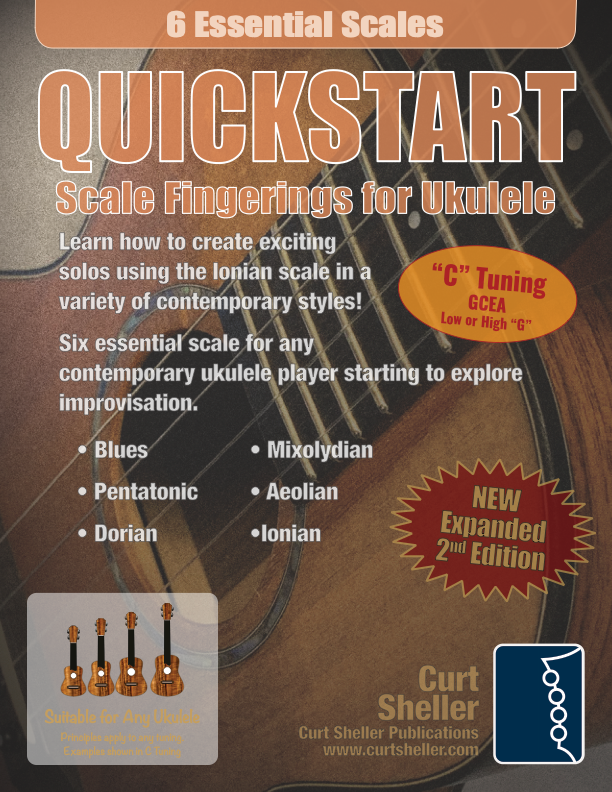
Learn to create exciting solos in a variety of contemporary styles! Scales are used to improvise, create melodies and riffs. With broad knowledge of the essential scales that are used in contemporary music and a mastery of the ukulele's fingerboard and fingering principles, you're well on your way.

Finally, learn the names of the notes of the ukulele fingerboard in C tuning .

Learn the six fingering principles to navigating the ukulele fingerboard. Fingering is one of the most universal topics. Book: Six Secrets of the Ukulele Fingering
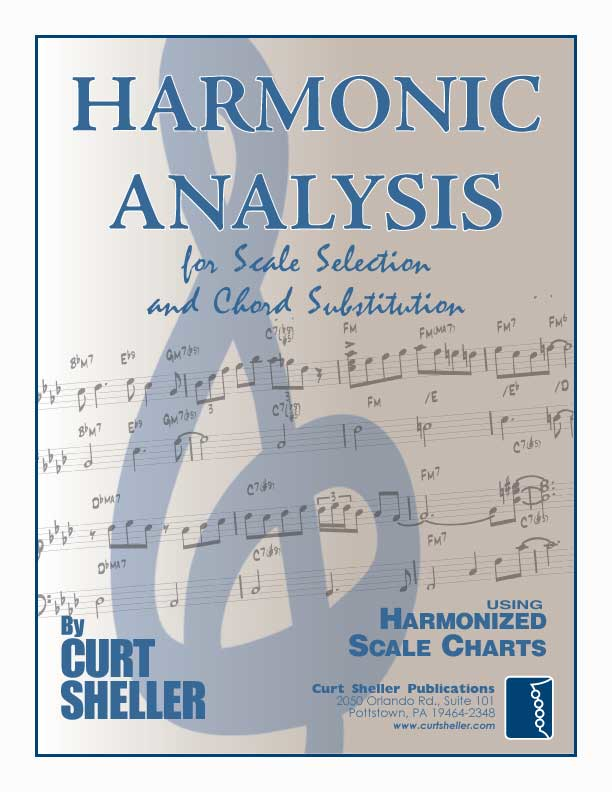
Harmonic Analysis is the understanding of the functional sequence of chords. It is the process used to analyze the harmonic structure of a progression, song or composition. Book: Harmonic Analysis for Scale Selection and Chord Substitution
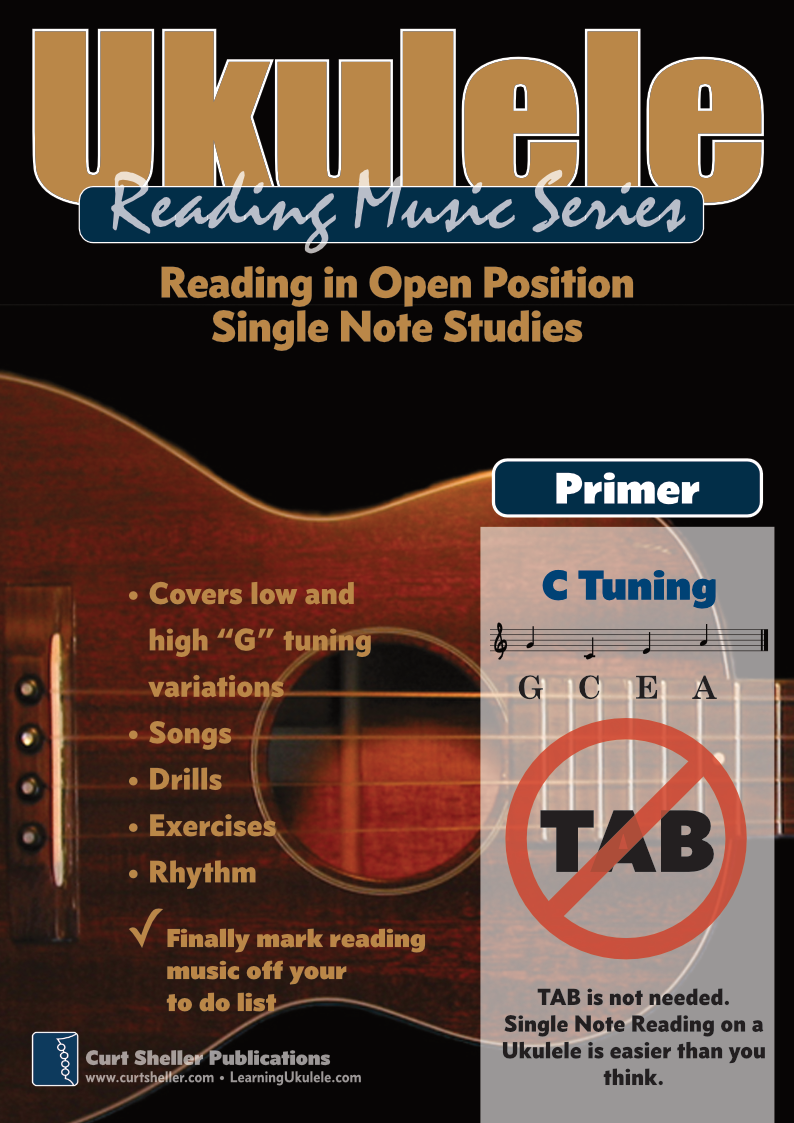
Learn to read single note melodies in the first/open position is a lot easier than you might think. Book: Ukulele – Reading Music Series – Primer
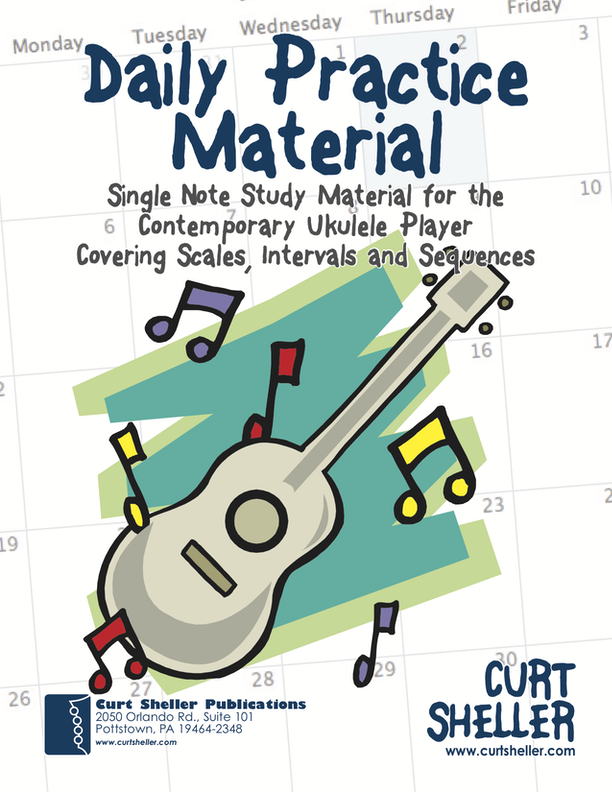
An organized collection of daily practice and reference material for the contemporary ukulele player for developing the vocabulary and knowledge necessary for single note playing. Book: Daily Practice Material for the Contemporary Ukulele
Checkout the Books & Reference Charts for additional Handy, Dandy Reference Charts.
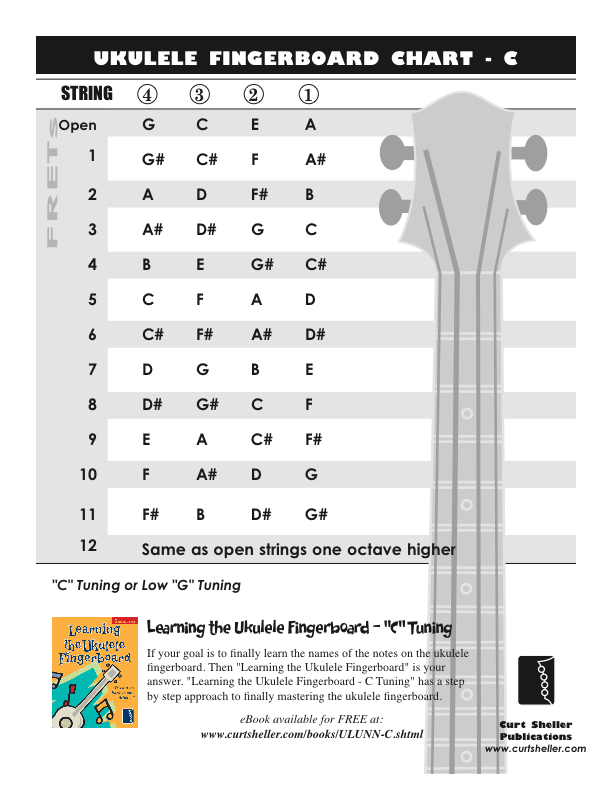
Ukulele Fingerboard Chart for C Tuning, Low or High G – G C E A
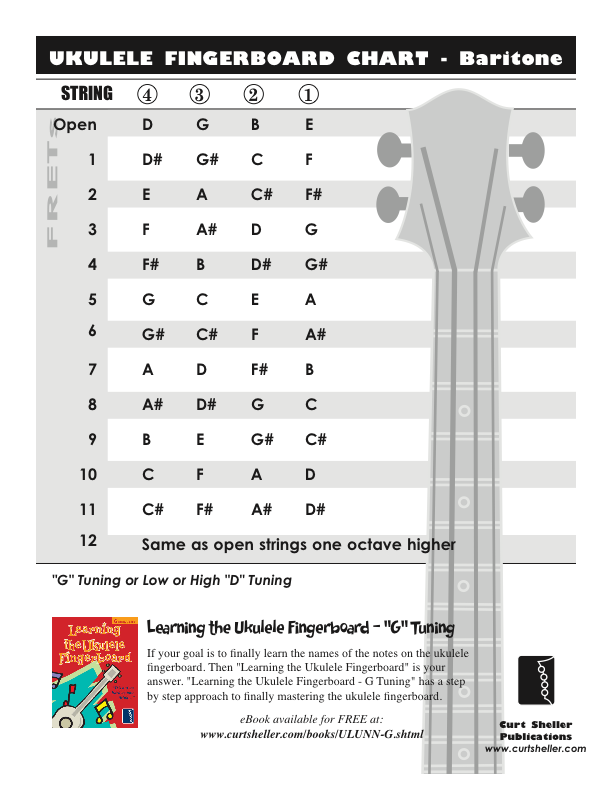
Ukulele Fingerboard Chart for G Tuning, Low or High A – D G B E
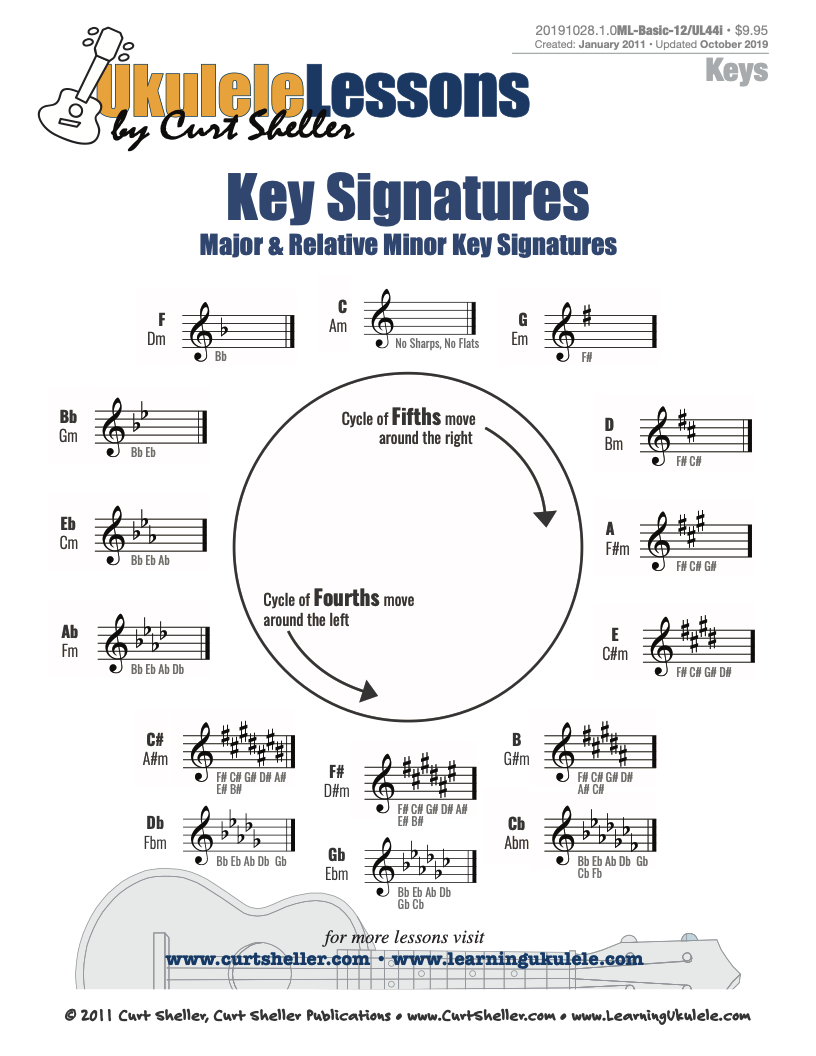
A handy reference chart of all 15 major and relative minor key signatures. US Letter 8.5 x 11 sized (ANSI-A), A4
Checkout the Books & Reference Charts for additional Handy, Dandy Reference Charts.




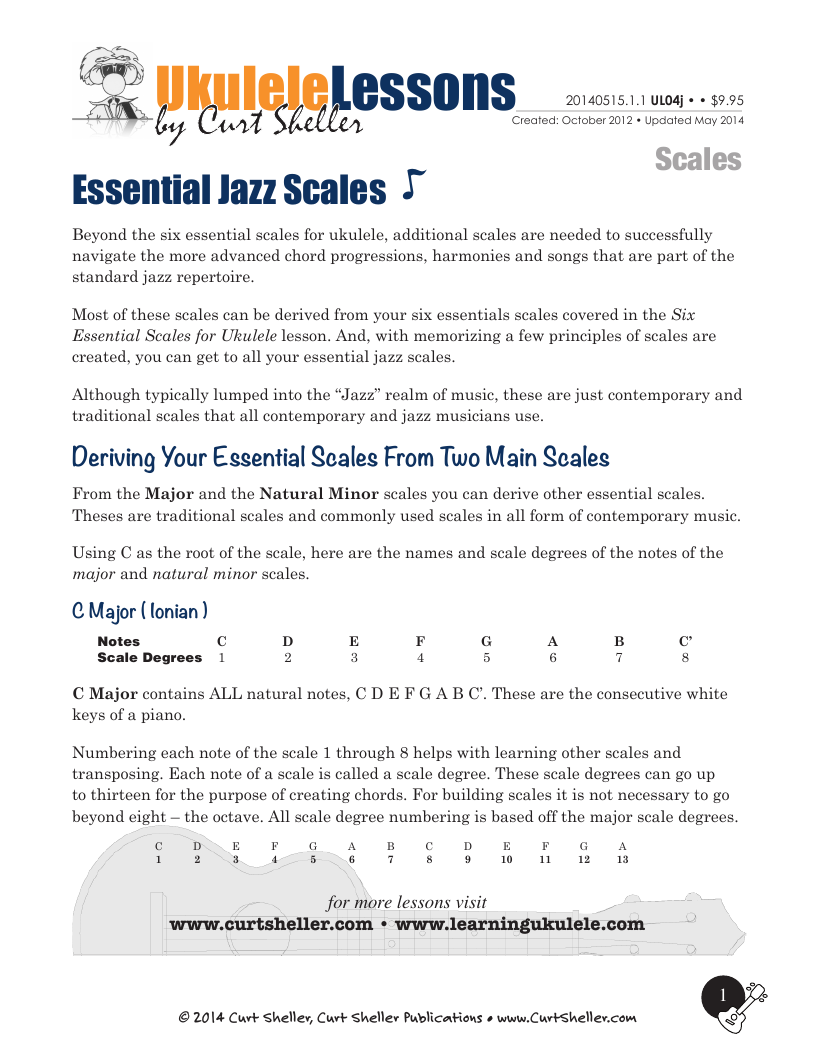
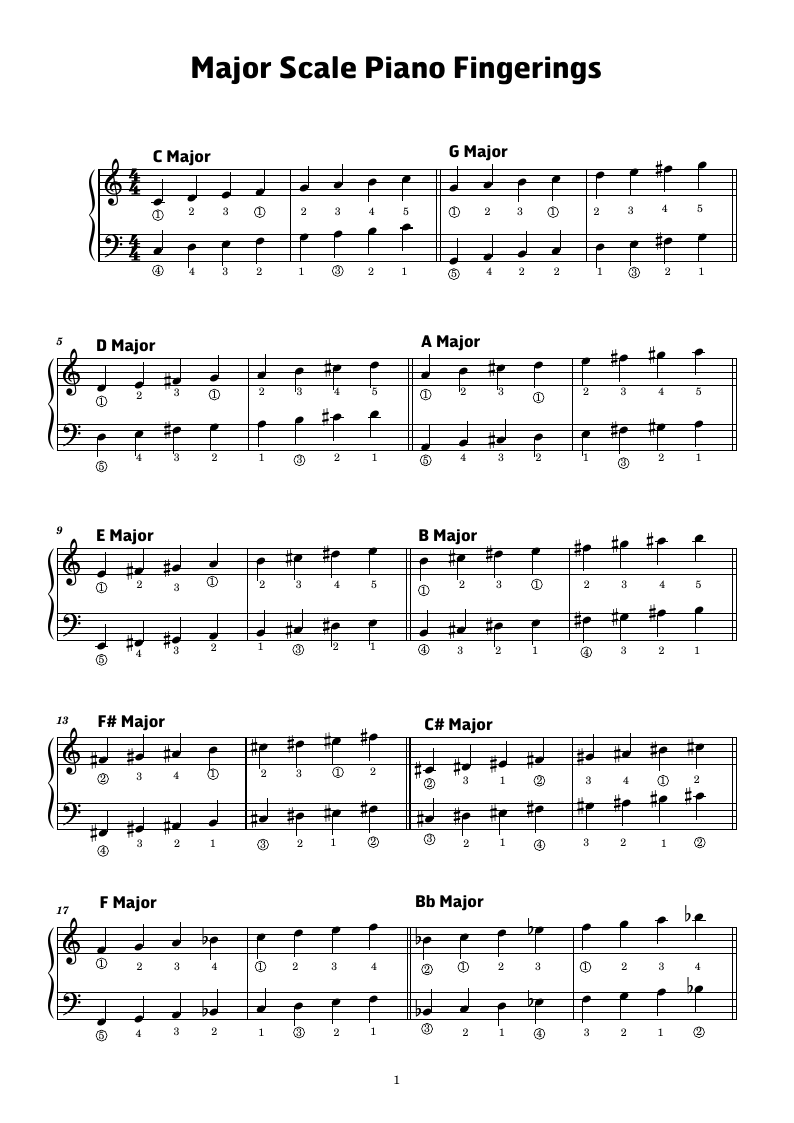


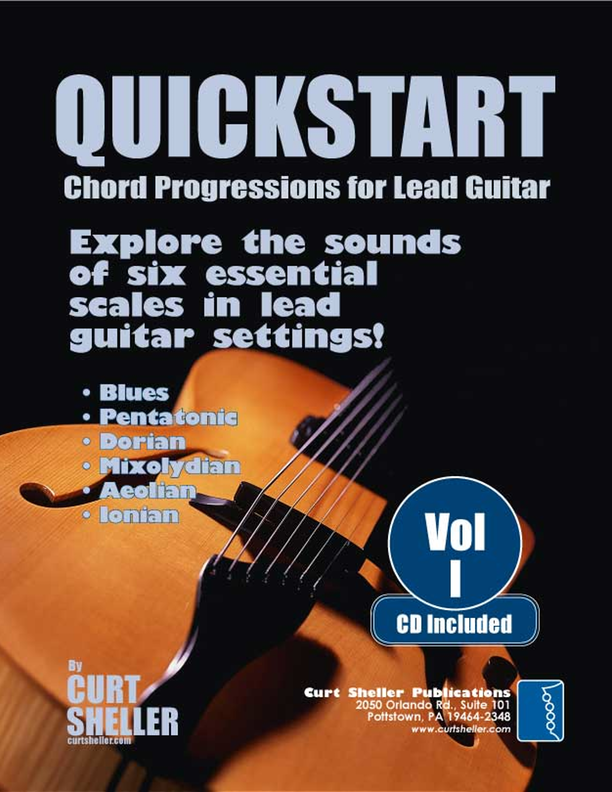
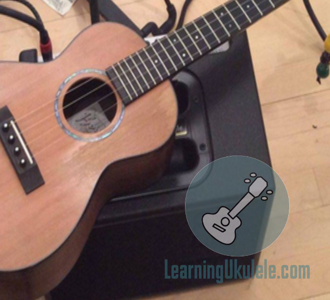
.jpg)